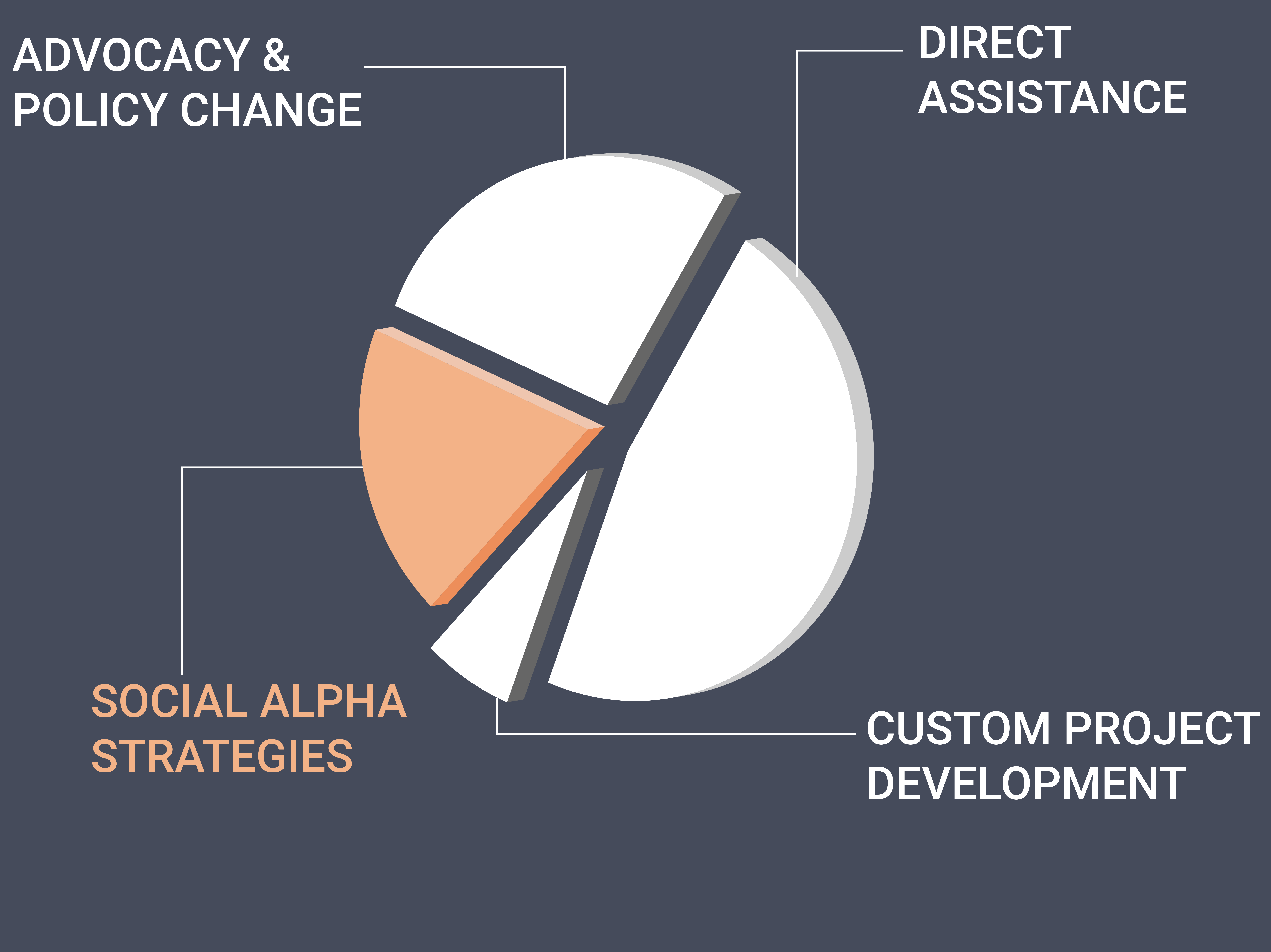In the world of finance, alpha is the measure of an investment’s ability to beat the market. Informed philanthropists must consider a similar question when making charitable contributions. Social Alpha strategies enable donors to make an impact greater than the sum of an initial contribution. In particular, this measure helps us categorize opportunities based on the answer to a simple question: Would we make a greater impact by giving funds directly to people in need?

A healthy portfolio might include causes with varying amounts of social alpha. However, some key factors can be helpful in identifying targets that fit this critical segment.
Community leadership helps to highlight the breadth of impact, while ensuring that a program is able to adjust services in line with real needs.
Sustainability measures both the financial lifetime of a single contribution and the long-term viability of a program’s vision.
Innovation & risk are often ignored features that are necessary components of a social alpha strategy. Philanthropy cannot hedge all risk if it seeks transformative solutions.
Interested in learning more about applications of Social Alpha? We share best practices and insights learned from our work through the blog.
Check it out